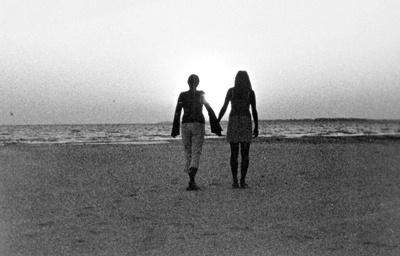All Nonfiction
- Bullying
- Books
- Academic
- Author Interviews
- Celebrity interviews
- College Articles
- College Essays
- Educator of the Year
- Heroes
- Interviews
- Memoir
- Personal Experience
- Sports
- Travel & Culture
All Opinions
- Bullying
- Current Events / Politics
- Discrimination
- Drugs / Alcohol / Smoking
- Entertainment / Celebrities
- Environment
- Love / Relationships
- Movies / Music / TV
- Pop Culture / Trends
- School / College
- Social Issues / Civics
- Spirituality / Religion
- Sports / Hobbies
All Hot Topics
- Bullying
- Community Service
- Environment
- Health
- Letters to the Editor
- Pride & Prejudice
- What Matters
- Back
Summer Guide
- Program Links
- Program Reviews
- Back
College Guide
- College Links
- College Reviews
- College Essays
- College Articles
- Back
Lifeguarding on Lovell's Island MAG
Last summer, Boston saw fit to staff remote Lovell's Island in the middle of Boston Harbor with seven newly certified teenage lifeguards. On the first day, I arrived to discover that the address was not a beach or a pool, but a run-down industrial loading dock. Though I was relieved to find a group of equally bewildered teens sporting blaze-orange shirts, our shared uneasiness was immediately apparent. Our boss arrived on a boat, wearing a full Ranger uniform on this sweltering day, only to inform us that the pier accessing Lovell's Beach was sinking and that our function was "slightly unclear."
After a week of weed-whacking and picking up trash on the island, we were told that they were not sure if the funding to open the beach would come through. We were given the opportunity to be placed elsewhere, but we had, in that one short week, developed an affinity for our strange surroundings, and opted to stay. Our dedication, we felt, was what helped open up Lovell's Island four days later.
The long and sandy side of the island was treacherous due to strong currents. The "guarded beach" consisted of a 20-foot stretch of jagged rocks. Needless to say, our "beach" didn't attract any swimmers. At best, we watched a few brave tourists stand with their pant legs rolled up in ankle-deep water.
To help pass the long, hot, swimmer-free days, I listened to music, read books and magazines, jogged around the island and exercised, not to mention perfected my tan. I also completed the summer work for my AP biology class. My experience, as it turned out, had more to do with life than lifeguarding.
For example, while studying the cycles of population growth for the ecology portion of my bio work, I noticed the uncanny number of rabbit carcasses on the island. I discovered that before its military use, Lovell was used as pasture by an Englishman who, not knowing about the effects of introducing an alien species, brought over rabbits to prey on the weeds choking his crops. As a result, the rabbit population underwent a cycle of over-population followed by over-production, followed by a drop in population. As it happened, we got to witness a sad turn of the cycle for the bunnies.
I also learned the history of the island and became a
self-proclaimed tour guide, embellishing small details to enhance the experience. I guided groups through the crumbling remains of Fort Standish, which functioned primarily as a means of communication between the open ocean and the shore of Boston Harbor during the Spanish-American War and World War II. One highlight was the story of Lover's Rock, a kind of heart-shaped (if you tilt your head and squint really hard) rock that was supposedly where two shipwrecked lovers who swam to Lovell and froze to death in each other's arms.
None of us saved any lives that summer, or, for that matter, did anything more life-guard-related than habitually swing our whistles around. But on reflection, I learned more that summer than I thought possible. I saw, firsthand, the population dynamics when an alien species is introduced, and I found that hearing colorful anecdotes gives greater meaning to otherwise mundane historical facts. But most important, I recognized that any experience is what you make of it. This unique learning experience occurred, for me, when a group of teenagers were left to their own devices to "lifeguard" day after sizzling day on an untamed island in Boston Harbor.

Similar Articles
JOIN THE DISCUSSION
This article has 1 comment.

0 articles 0 photos 12292 comments